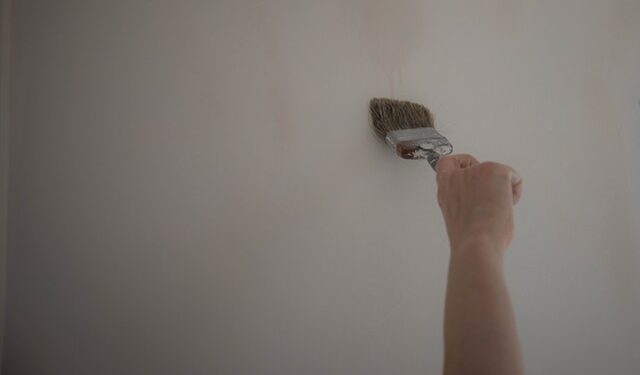How many coats of primer on wood

It’s a question that has plagued homeowners for years – how many coats of primer should be applied to wood before painting?
There are a few things to consider when answering this question. The first is the type of primer that is being used. Some primers are designed for one coat coverage, while others may require two or more coats. The second is the type of paint that will be going over the primer. If a high-quality paint is being used, it may only require one coat of primer. However, if a cheaper paint is being used, it may require two coats of primer to ensure good coverage.
In general, it’s best to err on the side of applying too much primer rather than too little. This is because it’s easier to add another coat of paint if needed than it is to try and fix a paint job that’s been ruined by not enough primer. So, if you’re unsure, it’s best to go with two coats of primer. This will ensure that your paint job looks its best and lasts for years to come.
What is primer and what does it do
Primer is an essential step in the painting process, but what is it and what does it do? In very basic terms, primer is a type of paint that you put on walls or other surfaces before you start to apply your chosen color. Primer helps the paint to adhere better to the surface, which means that it will last longer and look better when you’re finished.
2. How to choose the right primer
There are different types of primer available on the market, so it’s important to choose the one that is best suited for your needs. If you’re painting over a dark color, for example, you will need a white primer to help the new color to show up. If you’re painting over a glossy surface, you will need a primer that will help the paint to stick.
3. How to apply primer
Applying primer is similar to painting a wall or other surface. You will need to start with a clean, dry surface and make sure that you have all of the necessary supplies before you start. Once you have everything, you can begin to apply the primer using a brush, roller, or sprayer.
4. Tips for painting with primer
– Start by painting the edges of the surface first and then work your way in towards the center.
– Use long, even strokes to apply the primer and avoid going over the same area multiple times.
– If you’re using a brush, try to load it with enough primer so that you don’t have to stop in the middle of painting to reload.
– Once you’ve finished applying the primer, allow it to dry completely before you start painting the surface with your chosen color.
5. How to clean up after painting with primer
Cleaning up after painting with primer is fairly straightforward. If you’ve used a brush, you will need to wash it in soapy water and then allow it to air dry. If you’ve used a roller or sprayer, you will need to clean them according to the manufacturer’s instructions. Once you’ve cleaned up your supplies, you can dispose of any leftover primer in the trash.
How many coats of primer should you use
When painting a room, you will want to use primer to cover the surface and create a smooth base for the paint. How many coats of primer you should use will depend on the condition of the surface, but in most cases using two coats is recommended. In this post, we’ll explain why using two coats of primer is often best practice, and how to know if your surface may require more coats.
If you’re painting over a dark color, or you want to achieve a very light color with your paint, you may need to use more than two coats of primer. In these cases, using three coats of primer can help you achieve the desired result.
When in doubt, it’s always best to consult with a painting professional to get their expert opinion on how many coats of primer your project will require.
What are some tips for applying primer correctly
It’s no secret that priming your surface before painting is important for the finished product. But did you know that how many coats of primer you should use can depend on a variety of factors? In this blog post, we’ll give you some tips on how to apply primer correctly so that your paint job turns out looking great.
If you’re painting over a dark color, you may need to use more than one coat of primer. This will help to ensure that the new color you’re painting over it will be evenly covered. If you’re painting over a light color, one coat of primer should be sufficient.
When applying primer, make sure to use even strokes and pay attention to the edges of your surface. It’s also important to let each coat of primer dry completely before adding another. Once you’ve applied the desired number of coats, you can then begin painting your surface with the color of your choice.
Can primer be used on other surfaces than wood
When it comes to painting, priming is one of the most important steps. But how many coats of primer should you use? And can primer be used on other surfaces than wood? In this blog post, we’ll answer these questions and more. So keep reading to learn everything you need to know about priming!
One of the most common questions we get here at The Paint Studio is: how many coats of primer should you use? And the answer is: it depends. If you’re painting over a light-colored paint, you may only need one coat of primer. But if you’re painting over a dark color or a glossy finish, you may need two or even three coats of primer.
Another common question is whether or not primer can be used on other surfaces than wood. The answer is yes! Primer can be used on metal, concrete, and drywall. In fact, there are even special primers made specifically for each of these surfaces. So if you’re not sure which primer to use, just ask one of our painting experts and they’ll be happy to help you out.
When is the best time to apply primer
Most people know that priming is an important step in painting, but many don’t know how to prime correctly. In this post, we’ll discuss the best time to apply primer and how many coats of primer you should use.
The best time to apply primer is after you’ve sanded the surface you’re painting. This will give the primer a chance to adhere to the surface and create a smooth base for the paint.
As for how many coats of primer you should use, it depends on the type of paint you’re using and the condition of the surface you’re painting. If you’re using latex paint, two coats of primer should be sufficient. However, if you’re painting over a dark color or painting on a porous surface, you may need to use three coats of primer.
In general, it’s better to err on the side of using too much primer rather than too little. This will help ensure that your paint job looks its best and lasts for many years to come.
How much does primer cost
Most people don’t realize that there is an art to painting. It doesn’t matter if you are painting a wall, a room, or a house. There are specific techniques that will make your paint job look much better than if you just slap the paint on without any thought. One of the most important aspects of painting is the use of primer. But how many coats of primer should you use?
This is a difficult question to answer because it depends on the surface you are painting, the type of paint you are using, and your personal preferences. If you are painting a new wall, you will probably only need one coat of primer. However, if you are painting over an old paint job, you may need two coats of primer to cover up the existing paint.
The type of paint you are using will also affect how many coats of primer you need. If you are using a latex paint, you will probably only need one coat of primer. However, if you are using an oil-based paint, you may need two coats of primer to get good coverage.
Your personal preferences will also play a role in how many coats of primer you use. If you want a very smooth paint job, you may need to use two coats of primer. However, if you are okay with a slightly rougher finish, you may be able to get away with only one coat of primer.
In general, it is best to err on the side of using too much primer rather than not enough. This is because it is much easier to add another coat of paint over a primed surface than it is to try to fix a paint job that has been ruined by not using enough primer.
So, how many coats of primer should you use? The answer is that it depends on the surface you are painting, the type of paint you are using, and your personal preferences. However, in general, it is best to use two coats of primer to get the best results.
7. How do I apply primer
There are a few different ways to apply primer, depending on the type of primer you are using and the surface you are painting. If you are using an oil-based primer, you will need to use a brush or roller specifically designed for oil-based paints. If you are using a latex primer, you can use a regular paintbrush or roller.
To apply the primer, start in one corner of the room and work your way around in a consistent manner. Make sure to evenly cover the entire surface with the primer. Once the primer is applied, let it dry completely before moving on to the next step.
8. What are the benefits of using primer
Primer provides a number of benefits that make it an essential part of any painting project. Primer helps to create a smooth surface for the paint to adhere to, it helps to cover up imperfections in the wall, and it helps the paint to last longer. Additionally, primer can help to provide better coverage for darker paint colors.
9. How long does primer take to dry
The amount of time it takes for primer to dry will vary depending on the type of primer you are using and the conditions in your home. In general, oil-based primers will take longer to dry than latex primers. Additionally, if your home is particularly humid or cold, it will take longer for the primer to dry.
In general, you should allow the primer to dry for at least 24 hours before moving on to the next step in your painting project.
10. What are the different types of primer
There are two main types of primer: oil-based and latex. Oil-based primers are typically used for painting over old paint jobs or for painting surfaces that are particularly difficult to paint. Latex primers are typically used for painting new surfaces or for painting over light-colored paint jobs.
11. Which type of primer should I use
The type of primer you should use will depend on the surface you are painting, the type of paint you are using, and your personal preferences. In general, oil-based primers are better for painting over old paint jobs or for painting difficult surfaces. Latex primers are better for painting new surfaces or for painting over light-colored paint jobs.
12. How much primer should I use
The amount of primer you should use will depend on the size of the surface you are painting and the type of primer you are using. In general, you should use about one gallon of primer for every 100 square feet of surface area.
13. What is the best way to store leftover primer
If you have leftover primer, it is important to store it properly so that it does not become unusable. Leftover oil-based primer can be stored in an airtight container for up to six months. Leftover latex primer can be stored in an airtight container for up to two years.
14. How do I dispose of leftover primer
Leftover primer can be disposed of in a number of ways. You can either donate it to a local paint store or hazardous waste facility, or you can mix it with an absorbent material and put it in the trash.
15. Will primer protect my paint job from peeling
Primer will not completely prevent paint from peeling, but it will help to extend the life of your paint job by creating a better bond between the paint and the surface. Additionally, primer can help to prevent peeling by providing a barrier between the paint and the surface.
16. Can I use primer as a sealer
Primer can be used as a sealer, but it is not the best option for sealing surfaces. Primer is designed to provide a better bond between the paint and the surface, so it is not as effective at sealing surfaces as other products that are specifically designed for that purpose.
How many coats of primer on wood
Primer is an essential part of any painting project because it helps to create a smooth surface for the paint to adhere to, cover up imperfections in the wall, and last longer. In general, you should allow primer to dry for at least 24 hours before moving on to the next step in your painting project. There are two main types of primer: oil-based and latex. The type of primer you should use will depend on the surface you are painting and the type of paint you are using. You can either donate leftover primer to a local paint store or hazardous waste facility, or mix it with an absorbent material and put it in the trash. Primer will not completely prevent paint from peeling, but it will help to extend the life of your paint job by creating a better bond between the paint and the surface. Additionally, primer can help to prevent peeling by providing a barrier between the paint and the surface.






